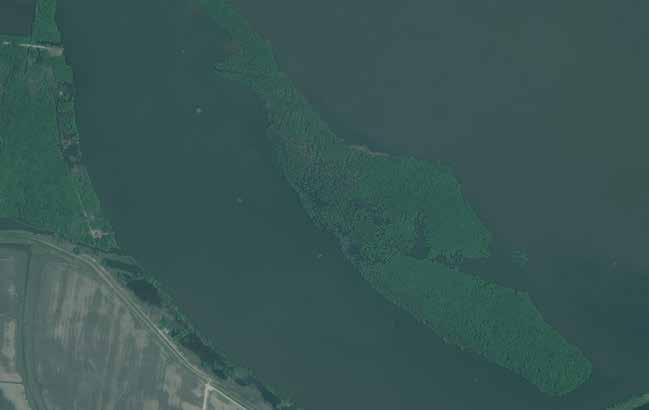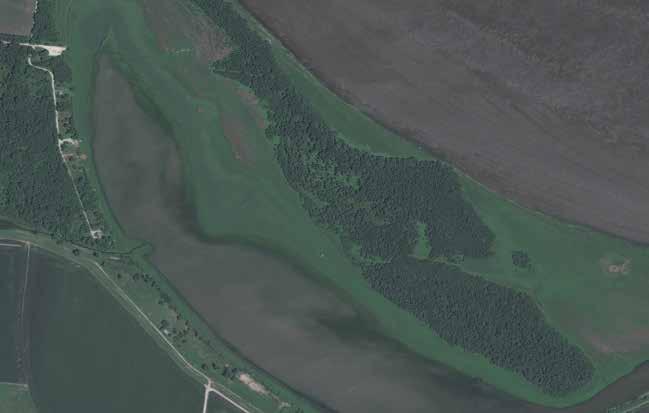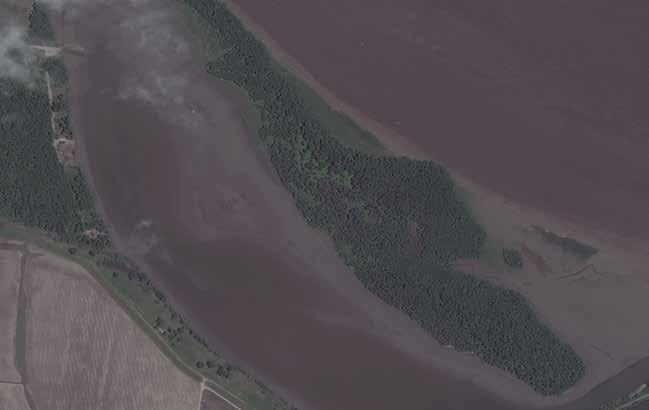The U.S. Army Corps of Engineers St. Louis District has a long-standing tradition of integrating engineering with nature to enhance navigation, restore ecosystems, and foster sustainable solutions for the Upper Mississippi River. As part of the Mississippi Valley Division’s Engineering With Nature (EWN) Proving Ground network, the St. Louis District builds on decades of innovative approaches to river management, working closely with partners to implement Nature-Based Solutions (NBS) that deliver environmental, social, and economic benefits.
The St. Louis District is uniquely positioned to pioneer EWN practices, leveraging its trust-based relationships with federal, state, and local partners. Through innovative river engineering strategies, environmental pool management, and collaborative mechanisms like the River Resources Action Team (RRAT), the District continues to transform how navigation and ecosystem restoration can coexist.
Key Focus Areas:
- Sustainable Navigation and Habitat Creation: Developing innovative river training structures to maintain navigation while creating habitats such as shallow water areas, vegetated islands, and mussel habitats.
- Environmental Pool Management: Restoring natural processes through modified lock and dam operations, resulting in the reestablishment of over 400 hectares of native vegetation annually in targeted pools.
- Collaborative Partnerships: Working with agencies like the U.S. Fish and Wildlife Service and state conservation departments through the RRAT to align river management with ecological goals.
- Innovative Use of Dredged Material: Exploring beneficial uses of dredged material to restore sandbar and island habitats critical for endangered species like the pallid sturgeon.
Through these efforts, the St. Louis District exemplifies how EWN principles can integrate engineering excellence with natural system processes, providing a model for sustainable river management across the region and beyond.
Maintaining Navigation on the Upper Mississippi River
Since the early 19th century, the Corps of Engineers has managed the Mississippi River to ensure reliable navigation, initially through measures like river training structures, side channel closures, snag removal, and the construction of locks, dams, and canals. By the 1970s, the St. Louis District began shifting its approach, recognizing that working with nature rather than against it could meet navigation needs while delivering environmental and social benefits. This innovative mindset has since driven decades of strategies to maintain navigation while restoring and creating diverse aquatic habitats across both open river and pooled reaches.
Channel Maintenance on the Open River
The St. Louis District ensures congressionally mandated navigation channel dimensions along Upper Mississippi River Miles 300-0, with a focus on the open river reach (River Miles 195-0). Channel maintenance is achieved through dredging, rock removal, and innovative river training structures, developed in collaboration with a broad range of project partners. These partnerships drive solutions that align with the river’s natural dynamics while delivering environmental benefits, such as creating shallow habitats, ephemeral islands, deep slack water scour holes, improved side channels, mussel habitats, and vegetated islands.
The Middle Mississippi River’s dynamic system naturally forms meander bends and channel cutoffs, creating potential risks. Instead of relying solely on hard engineering features, the District works with nature to mitigate these risks. For example, at Thompson Bend, natural tree screens were established with local landowners to reduce river energy and prevent destructive scour. At Dogtooth Bend, collaborations with federal, state, and local agencies, NGOs, and universities have resulted in monitoring efforts and a comprehensive plan addressing navigation, flood risk reduction, and environmental restoration.
Additionally, where dredging is necessary, the District is exploring innovative ways to use dredged material to restore critical habitats like sandbars and islands, benefiting species such as the federally endangered pallid sturgeon. Ongoing research continues to identify new opportunities for beneficial reuse of dredged material in riverine environments.
Environmental Pool Management
The construction of locks and dams on the Upper Mississippi River, primarily in the 1930s, provided a reliable navigation channel but disrupted the river’s natural hydrograph, altering environmental conditions and impacting habitats. In the early 1990s, state and federal natural resource partners requested the St. Louis District to modify operations at Lock and Dam 24 (Clarksville, MO), Lock and Dam 25 (Winfield, MO), and Melvin Price Lock and Dam (Alton, IL) to restore ecological conditions and natural processes in the pools.
Environmental pool management reestablishes natural processes by reducing large, rapid pool-level fluctuations. By slightly lowering water levels during the growing season, the technique mimics pre-dam conditions, promoting aquatic plant growth while maintaining the authorized 9-foot navigation channel. Over 30–40 days, water levels drop across 160 kilometers, exposing mudflats around riverbanks, islands, and sloughs, creating optimal conditions for vegetation growth.
Since 2015, targeted 90-day operations during the growing season have consistently produced over 400 hectares of vegetation annually, including reestablishing native arrowhead (Sagittaria latifolia) communities not seen since 1993. Environmental pool management demonstrates how slight operational adjustments can restore river form and function, delivering ecological benefits alongside navigation support.
Due to the large success and broad stakeholder support of environmental pool management, the District is now considering ways to implement similar pool management practices at other dam operations within the District.
Alton Lake in Lower Pool 26

May 2017 when water elevations were at or near the normal pool.

July 2018 when water elevations were lowered for environmental pool management, while vegetation is growing.

May 2020 when water elevations were lowered for environmental pool management, before vegetation growth.
Effective Partner Relationships – River Resources Action Team (RRAT)
The success of Engineering With Nature projects relies on trust, collaboration, and input from diverse project partners. To strengthen and formalize these relationships, the St. Louis District established the River Resources Action Team (RRAT) in 2002 through a Memorandum of Understanding with the U.S. Fish and Wildlife Service, Illinois Department of Natural Resources, and Missouri Department of Conservation.
Originally, RRAT provided a structured process to meet regulatory, statutory, and procedural requirements for sustainable Mississippi River management. It facilitated the implementation of reasonable and prudent alternatives (RPA) and measures (RPM) for species like the pallid sturgeon and least tern under the Biological Opinion for the 9-Foot Channel Project. Additionally, it served as a coordination forum for the Regulating Works and Channel Maintenance Programs, the Upper Mississippi River Restoration Program, and other river management initiatives.
Over the past two decades, RRAT has evolved into a vital collaborative platform for planning, prioritizing, and managing projects within the Upper Mississippi River System. It promotes information exchange, data collection, and innovative solutions that align engineering goals with ecosystem restoration and protection.
Regular coordination trips by boat allow river engineers, environmental regulators, and stakeholders to discuss ongoing projects, share updates, and identify future opportunities. These trips foster interdisciplinary collaboration, generate new ideas for river-training structures, and strengthen relationships among participants, ensuring that diverse goals and viewpoints are integrated into sustainable river management.


